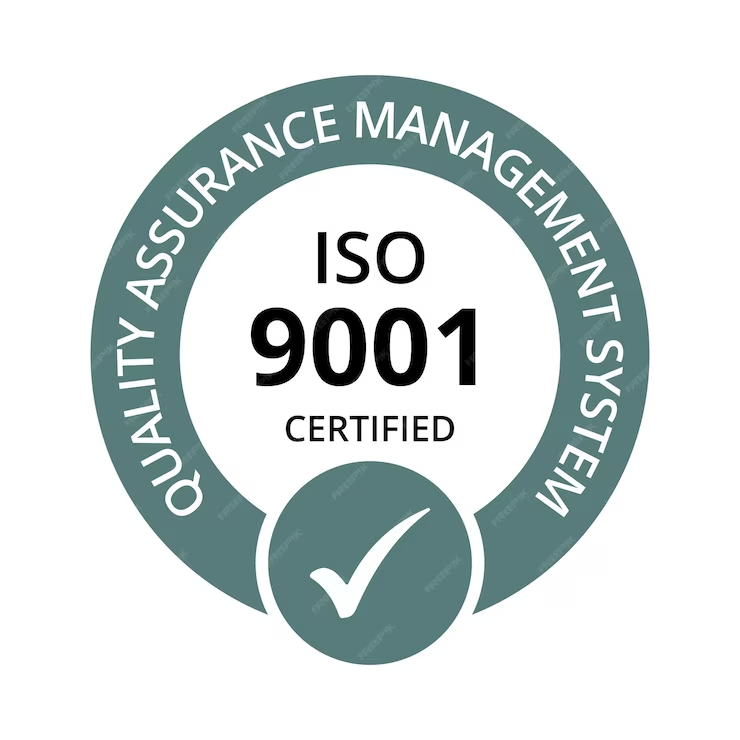I. Introduction
A. Overview of ISO 9001
ISO 9001 is a globally recognized standard for quality management systems (QMS). It provides a framework for organizations to consistently meet customer and regulatory requirements, enhancing overall satisfaction. Developed by the International Organization for Standardization (ISO), this standard emphasizes continuous improvement, risk management, and a customer-focused approach. Applicable to organizations of any size and in any sector, ISO 9001 is an essential tool for promoting quality in products and services.
B. Importance of Quality Management in Businesses
Quality management is vital for organizations striving to succeed in today’s competitive landscape. A robust QMS streamlines processes, reduces waste, and boosts operational efficiency. By prioritizing quality, businesses can enhance customer satisfaction, fostering loyalty and repeat business. Additionally, effective quality management minimizes risks related to non-compliance and product defects, ultimately saving costs and safeguarding the organization’s reputation.
C. Purpose of ISO 9001 Training
ISO 9001 training is a crucial step for organizations looking to implement or improve their quality management systems. This training equips employees with the necessary knowledge and skills to understand ISO 9001 principles, effectively implement the standard, and foster a culture of quality within the organization. Investing in ISO 9001 training ensures that teams are prepared to uphold quality standards, manage processes efficiently, and drive continuous improvement.
II. What is ISO 9001 Training?
A. Definition and Objectives
ISO 9001 training is a structured educational program designed to help individuals and organizations effectively understand and implement the ISO 9001 standard. Its primary objective is to provide participants with a comprehensive grasp of quality management principles, the requirements of the ISO 9001 standard, and how to apply these concepts within their organizations. Mastery of these elements enables employees to enhance quality, improve processes, and cultivate a culture of continuous improvement.
B. Target Audience for ISO 9001 Training
ISO 9001 training is beneficial for a wide range of individuals across various organizational roles. The target audience includes:
- Quality Managers and Coordinators: Responsible for overseeing quality management systems and ensuring ISO 9001 compliance.
- Internal Auditors: Tasked with conducting audits to assess compliance and identify areas for improvement.
- Operations and Production Personnel: Employees whose work directly impacts product quality and customer satisfaction.
By tailoring training to these diverse roles, organizations can ensure all team members share a common understanding of quality management.
C. Different Levels of Training (Awareness, Internal Auditor, Lead Auditor)
ISO 9001 training typically consists of several levels, each addressing specific needs within the organization:
- Awareness Training: This introductory level provides all employees with a basic understanding of ISO 9001 principles, the significance of quality management, and the organization’s commitment to quality. It promotes a culture of quality awareness.
- Internal Auditor Training: Aimed at individuals who will conduct internal audits, this training equips participants with the skills needed to assess compliance with ISO 9001 standards, identify non-conformities, and recommend corrective actions.
- Lead Auditor Training: This advanced program is for professionals who wish to lead audits and manage the certification process. Participants learn in-depth auditing techniques, quality management system principles, and how to lead audit teams.
By offering these varied training levels, organizations can ensure their workforce is well-prepared to uphold quality standards and support quality management initiatives.
III. Key Components of ISO 9001 Training
A. Understanding Quality Management Principles
A core component of ISO 9001 training is a thorough understanding of the fundamental principles of quality management. These principles underpin the ISO 9001 standard and guide organizations in developing effective quality management systems. Key principles include:
- Customer Focus: Meeting customer requirements and enhancing satisfaction to drive business success.
- Leadership: The role of leadership in establishing a vision and creating an environment conducive to quality objectives.
- Engagement of People: Involving all employees in the quality management process to leverage their skills and insights.
- Process Approach: A systematic approach to managing processes for consistent and predictable outcomes.
Understanding these principles enables participants to align their actions with the organization’s quality objectives and fosters a commitment to quality.
B. Detailed Breakdown of ISO 9001 Requirements
ISO 9001 training includes a thorough breakdown of the standard’s requirements, covering key clauses and sub-clauses. Participants learn about:
- Context of the Organization: Understanding internal and external factors that affect the organization’s ability to achieve its quality objectives.
- Leadership and Commitment: The importance of top management’s involvement in supporting the quality management system.
- Planning: Developing quality objectives and addressing risks and opportunities related to those objectives.
- Support: Identifying the resources needed for effective implementation and maintenance of the QMS, including personnel, infrastructure, and training.
This detailed understanding allows participants to apply the requirements effectively within their organizations.
C. Tools and Techniques for Implementing ISO 9001
Effective ISO 9001 training also introduces participants to various tools and techniques that facilitate the implementation of the standard. Key tools include:
- Quality Audits: Training on conducting internal audits to assess compliance with ISO 9001 and identify improvement opportunities.
- Process Mapping: Techniques for visualizing and documenting processes to enhance understanding and pinpoint inefficiencies.
- Root Cause Analysis: Methods for identifying underlying causes of non-conformities to develop effective corrective actions.
By equipping participants with these tools and techniques, ISO 9001 training empowers them to effectively implement and maintain a robust quality management system that aligns with organizational objectives and the ISO 9001 standard.
IV. Benefits of ISO 9001 Training
A. Improved Quality Management Skills
A primary benefit of ISO 9001 training is the enhancement of quality management skills among participants. By understanding the principles and requirements of ISO 9001, individuals become proficient at:
- Implementing Effective Quality Systems: Learning to design and maintain quality management systems that meet both organizational needs and regulatory standards.
- Conducting Audits: Acquiring skills in planning and conducting internal audits, crucial for assessing compliance and identifying areas for improvement.
- Problem-Solving: Developing critical thinking and analytical skills to address quality issues and implement corrective actions effectively.
This comprehensive skill set empowers employees to contribute more effectively to their organizations, fostering a culture of quality and continuous improvement.
B. Enhanced Organizational Efficiency
ISO 9001 training significantly boosts organizational efficiency. By equipping participants with knowledge about process optimization and quality management practices, organizations can expect:
- Streamlined Processes: Training helps teams identify inefficiencies in workflows, leading to better resource management and reduced waste.
- Standardization: Implementing ISO 9001 promotes consistency in processes and outputs, ensuring that products and services meet established quality criteria.
- Informed Decision-Making: Participants learn to use data and performance metrics for decision-making, resulting in more informed and effective business strategies.
As efficiency improves, organizations can operate more smoothly, leading to cost savings and enhanced productivity.
V. The ISO 9001 Training Process
A. Assessing Training Needs
The first step in the corso iso 9001 process is to assess the needs of the organization and its employees. This ensures the training is relevant and targeted. Key activities include:
- Conducting a Skills Gap Analysis: Identify existing skills versus required competencies to pinpoint training areas. This can involve surveys, interviews, or performance reviews.
- Understanding Organizational Goals: Align training objectives with the organization’s quality management goals to ensure training contributes to broader business aims.
- Identifying Target Audiences: Different roles may require varying training levels. For example, management may focus on strategic implementation, while operational staff concentrate on daily quality assurance.
By assessing training needs, organizations can tailor initiatives to maximize relevance and effectiveness.
B. Choosing the Right Training Program
After assessing training needs, the next step is selecting an appropriate ISO 9001 training program. Consider the following factors:
- Types of Training Available: Options include workshops, online courses, and in-house sessions, each with unique benefits depending on the organization’s needs.
- Accredited Providers: Choose training from accredited providers to ensure it meets international standards and offers recognized certification upon completion.
- Course Content: Review the syllabus to ensure it covers essential aspects of ISO 9001, including quality management principles, documentation requirements, and auditing practices. Look for practical applications and case studies.
Selecting the right program sets the foundation for effective learning and application of ISO 9001 principles.
VI. Common Challenges in ISO 9001 Training
A. Resistance to Change
A significant hurdle during ISO 9001 training is resistance to change. Employees may be hesitant to adopt new practices for several reasons:
- Fear of the Unknown: Concerns about how changes will impact roles or the organization can hinder acceptance. Open communication about the benefits of ISO 9001 can help alleviate these fears.
- Comfort with Current Processes: Familiarity with existing workflows can lead to reluctance in altering them. Highlighting the benefits of ISO 9001, such as increased efficiency, can motivate acceptance.
- Lack of Leadership Buy-In: Without active support from leadership, employees may be less inclined to participate. Management should champion the initiative to foster a culture of acceptance.
To address resistance, organizations should emphasize the positive impacts of ISO 9001 training and involve employees in the change process.
B. Keeping Employees Engaged
Maintaining employee engagement throughout the ISO 9001 training process can be challenging. Strategies to enhance engagement include:
- Interactive Learning: Incorporate hands-on activities, group discussions, and real-life case studies to make training sessions more engaging.
- Tailored Content: Customize training materials to address the specific needs of different departments, making the content more relevant.
- Continuous Support: Provide ongoing support through follow-up sessions or accessible resources to reinforce learning over time.
C. Navigating the Complexity of ISO Standards
Understanding ISO standards can be intricate, presenting several challenges during training:
- Technical Jargon: Specialized language in ISO documentation may confuse those unfamiliar with the terminology. Simplifying concepts and providing glossaries can enhance understanding.
- Interconnectedness of Standards: ISO 9001 relates to other standards, like ISO 14001 (Environmental Management) or ISO 27001 (Information Security). Training that clarifies these relationships can improve comprehension.
- Implementation Challenges: Transitioning theoretical knowledge to practical application can be daunting. Providing practical examples and hands-on training can help visualize implementation.
By proactively addressing these challenges, organizations can create a more effective ISO 9001 training environment that promotes understanding, engagement, and successful implementation.
VII. Tips for Successful ISO 9001 Training
A. Foster a Culture of Quality
Creating a quality-centric culture is essential for the success of ISO 9001 training. Strategies include:
- Leadership Commitment: Ensure top management demonstrates a strong commitment to quality, setting a tone that resonates throughout the organization.
- Employee Empowerment: Encourage employees to take ownership of quality initiatives, fostering a sense of responsibility.
- Open Communication: Promote transparent communication about quality goals, challenges, and successes through regular meetings or forums.
- Recognition Programs: Implement programs that celebrate quality achievements, reinforcing the importance of quality in everyday operations.
B. Continuous Improvement Mindset
Embracing a continuous improvement mindset is vital for the long-term success of ISO 9001 training. Here’s how to cultivate this mindset:
- Regular Training Updates: Provide ongoing training sessions to keep employees informed about the latest ISO requirements and best practices.
- Feedback Mechanisms: Establish channels for employees to share insights on the training process and implementation of ISO 9001 principles.
- Kaizen Philosophy: Encourage a Kaizen approach, promoting small, incremental changes for significant improvements over time.
- Benchmarking and Best Practices: Regularly benchmark practices against industry standards to identify areas for improvement.
C. Utilize Experienced Training Providers
Choosing the right training provider is crucial for effective ISO 9001 training. Consider these tips:
- Accreditation and Certification: Ensure the provider is accredited and recognized in the industry.
- Industry Experience: Look for providers with a proven track record in your industry, as they will understand unique challenges.
- Customized Training Solutions: A good provider should tailor courses to fit your organization’s specific needs.
- Post-Training Support: Consider providers that offer follow-up support, helping reinforce learning and address challenges.
By fostering a culture of quality, embracing continuous improvement, and utilizing experienced training providers, organizations can ensure their ISO 9001 training is both successful and sustainable.
IX. Conclusion
A. Recap of the Importance of ISO 9001 Training
ISO 9001 training is more than just a compliance checkbox; it’s a strategic investment in quality management that leads to significant performance improvements. Employees equipped with ISO 9001 knowledge can implement effective quality management systems, ensuring consistency in processes, enhancing customer satisfaction, and driving continuous improvement. In today’s competitive landscape, quality management is crucial for achieving operational excellence and long-term success.
B. Encouragement to Pursue Quality Management Excellence
Achieving ISO 9001 certification is a journey toward quality management excellence. It allows organizations to comply with international standards and set benchmarks for quality within their industry. Embrace the challenges and opportunities of this journey, fostering a mindset where every team member sees quality as part of their role. With dedication and the right training, your organization can become a leader in quality management, enhancing both reputation and bottom line.




